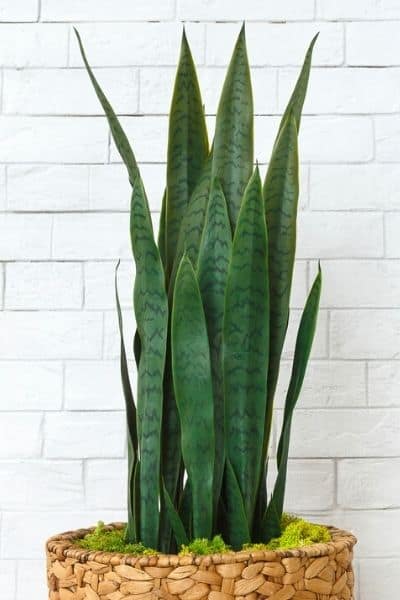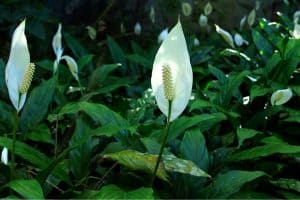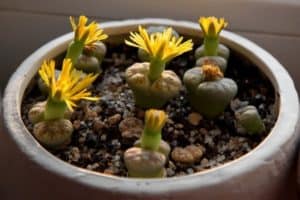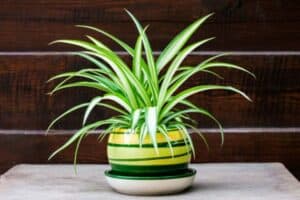Sansevierias, also known as snake plants or mother-in-law’s tongue, are popular, low maintenance indoor plants that can also be planted outdoors in some areas.
Caring for outdoor snake plants is easy, even for beginner gardeners, as long as the conditions are right.
In this article I’ll share my tips for growing and caring for sansevierias outdoors in your garden.
This post contains affiliate links. Please read the disclosure for more info.
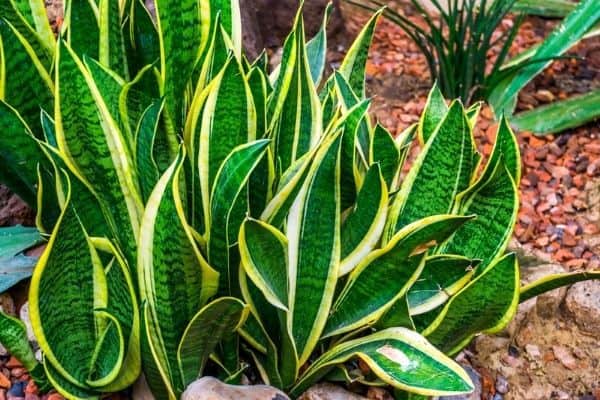
How to grow snake plants outdoors
Climate
Outdoor snake plants (Sansevieria spp.) grow best in warm climates with a temperature range of 70 ⁰F to 90 ⁰F (21 ⁰C to 32 ⁰C).
If you live in USDA zone 9 to 12 or an area outside the United States that has warm temperatures all year round you can plant snake plants outdoors in your garden.
In cooler climates, sansevierias can be planted in pots located outdoors during spring and summer and moved indoors for the cooler months.
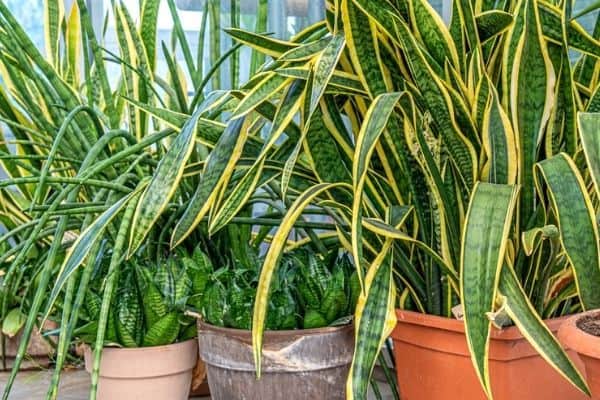
Location
The best place to plant snake plants outdoors is a sunny spot with good drainage.
If you have clay soil you’ll need to amend the soil with compost before planting.
Flowers
Sansevierias growing outdoors are more likely to bloom than those kept as houseplants but it’s unlikely that the plants will bloom every year, even in the right conditions.
The flowers are white or cream colored with a pleasant scent and grow on a long flower stalk.
Sansevieria flowers are pollinated by moths and after blooming they produce small red or orange berries that contain seeds.
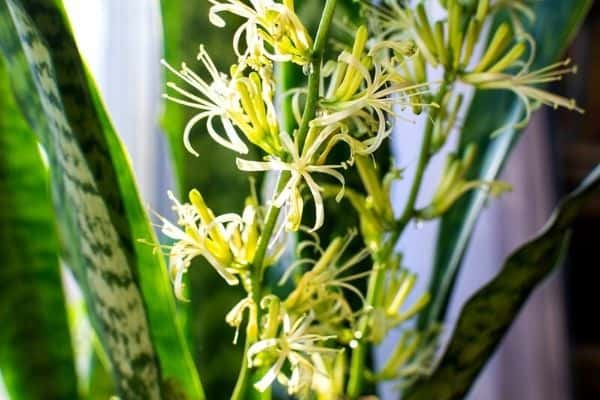
Planting snake plants outdoors
Prepare the soil before you start planting by digging in some aged compost or soil improver.
Dig a hole that is big enough to fit the roots and place the plant in the bottom of the hole.
Cover the roots with soil and give the plant a good watering.
If you’re planting more than one snake plant, space them out at least (30 cm) apart to give them room to spread out as they grow.
You can also plant sansevierias in an outdoor planter with small succulents like echeverias in front for a nice display.
Important note: Sansevierias have become invasive in some areas and there are restrictions on planting them outdoors.
Check that there aren’t any restrictions on growing sansevierias outdoors in your area before planting them in your garden.
Moving an indoor sansevieria outdoors
Indoor snake plants can be transplanted out in the garden but they’ll need some time to adjust to being outside, especially if they haven’t been exposed to direct sun before.
You can harden the plants off by placing them outdoors in partial shade for a week or so to get them used to the conditions outside before planting them in the garden.
Water
Snake plants are drought tolerant so they only need watering about once a week.
Try to avoid letting the soil become waterlogged because the roots will rot.
Check the soil with your finger before watering to make sure it’s dried out enough before watering again.
RELATED: How To Water Snake Plants
Fertilizer
Sansevierias planted in the garden don’t need a lot of fertilizer but you can apply a slow release fertilizer in spring while they’re actively growing.
Dividing sansevieria plants
Snake plants produce small baby plants known as offsets at the base of the plant and you can leave them in place to form large clumps in the garden or divide the plants every few years.
You can also propagate sansevierias by cutting the leaves into sections and placing them in water or seed raising mix.
Leaf propagation is best for varieties with green leaves because variegated sansevierias will lose the variegations if propagated from leaf cuttings.
Pests
Outdoor sansevierias can be affected by a variety of annoying pests including:
Scale – small insects that look like little brown lumps on the leaves
Mealybugs – small, white fuzzy looking insects
Spider mites – appear as yellow or brown spots on the leaves
If you notice any of these pests on your snake plants you’ll need to get the infestation under control by wiping the leaves with a damp cloth to remove as many of the insects as possible.
Spray the leaves with a neem oil spray or insecticidal soap once a week to get rid of the remainder of the insects.
It’s best to spray the plants in the evening when it’s cooler to avoid burning the leaves.
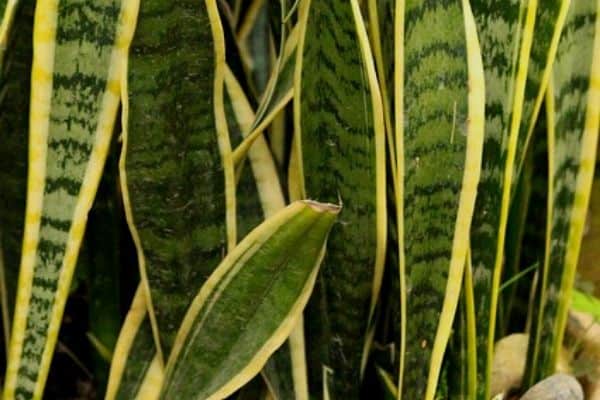
How tall do sansevierias grow outdoors?
Most sansevieria varieties grow one to three feet (30 to 90 cm) tall but there are some varieties like Sansevieria cylindrica that can grow five feet (1.5 metres) tall. [1]
Can snake plants tolerate full sun?
Sansevierias love full sun, especially variegated varieties which become more vibrant in color when they get plenty of sun.
Are snake plants frost tolerant?
Sansevierias aren’t frost hardy so if you live in a cool climate area it’s best to grow the plants in containers and move them inside before the temperature starts to cool down.
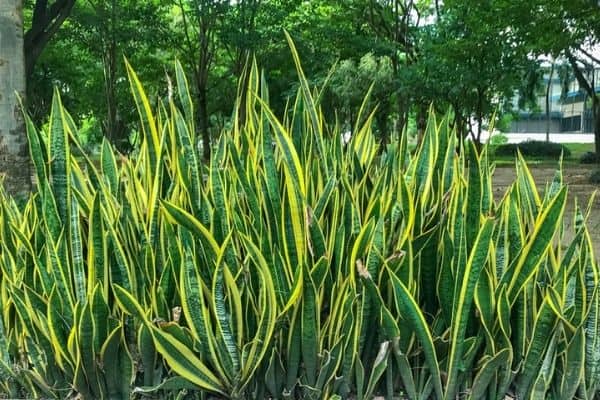
RELATED ARTICLES
- How To Grow Peace Lilies Outdoors
- Echeveria Flower Guide
- 5 Carnivorous Houseplants
- How to Grow Bromeliads Outdoors
- How to Remove Agave Plants
So there are my tips for growing and caring for snake plants outdoors.
With the right location and care you can enjoy these stunning, low maintenance plants in your succulent garden for many years to come.
Have you had success growing sansevierias outdoors? Let me know in the comments below.
Are you on Pinterest? I have boards dedicated to Urban Gardens and Gardening Tips that you may enjoy. You can also find me on Facebook.


